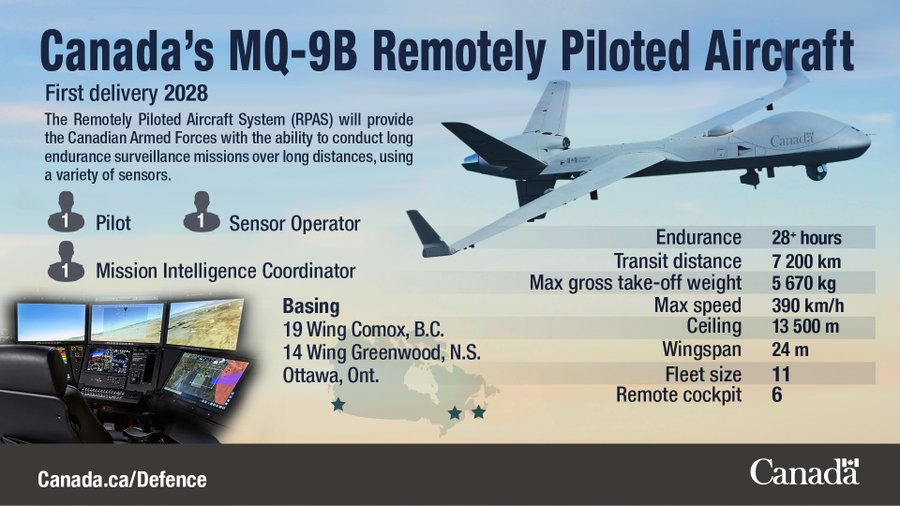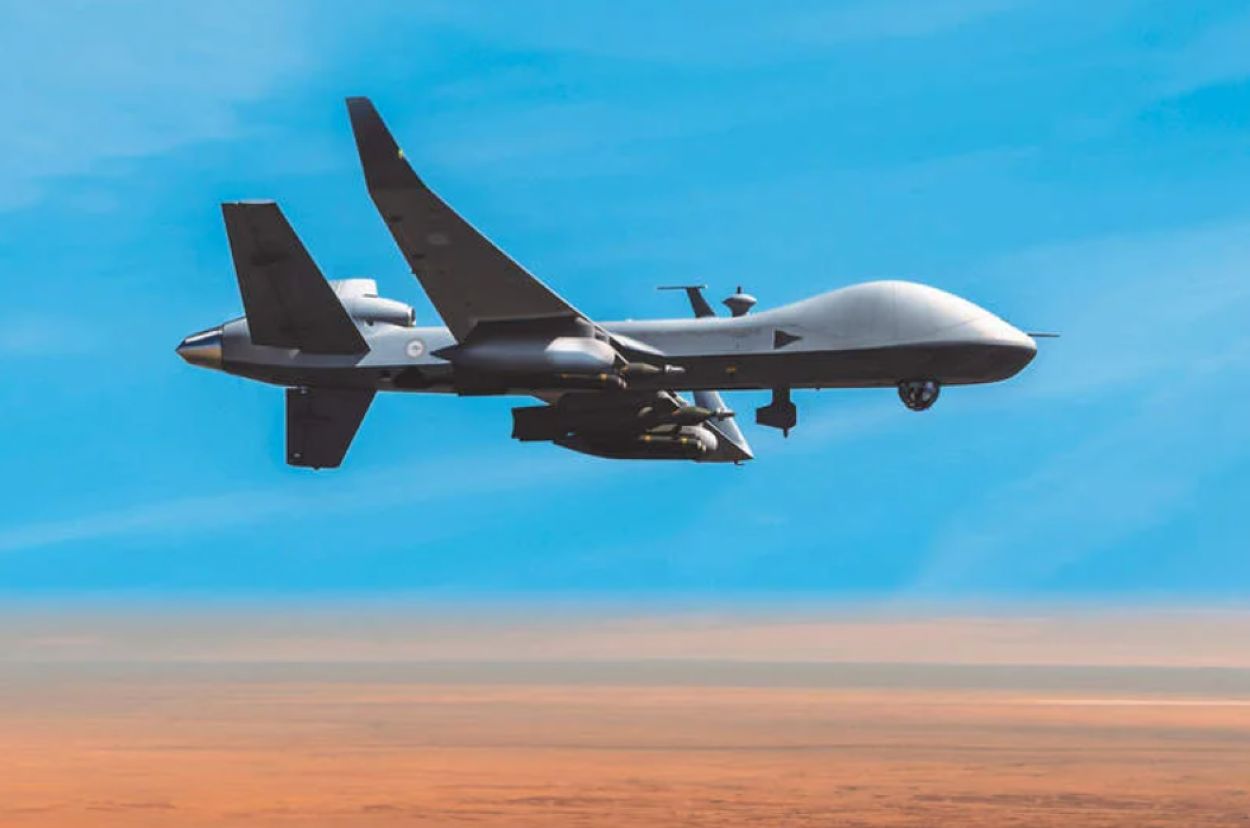After experiencing years of delays, Canada has finally approved a US$2.49 billion procurement of US-made remotely piloted drones for its Air Force. On December 19, Canadian authorities announced Ottawa’s intention to allocate funds to acquire 11 remotely piloted drones.
These MQ-9 drones will significantly contribute to the Royal Canadian Air Force’s capacity for conducting long-distance surveillance. The drones, known as the Remotely Piloted Aircraft System, will be procured from US-based General Atomics Aeronautical Systems Inc., with specific components sourced from the United States government.
The comprehensive acquisition package encompasses not only 11 aircraft but also includes six ground control stations, a new ground control center to be established in Ottawa, two additional aircraft hangars, and weapons and training technology provisions.
All infrastructure costs have been included in the overall budget for the project, in line with Canada’s strategic goal of maintaining a modern, adaptable military capable of addressing evolving security challenges while meeting domestic and international obligations.
Defence Minister Bill Blair emphasized the significance of these drones in providing Canada’s military with agile response options during deployments.
Blair underscored the importance of a modern and adaptable military capable of effectively addressing evolving security challenges while balancing the increasing demand for domestic assistance with the responsibility to defend Canada, protect North America, and support allies.
The large drones are slated for deployment to monitor Canada’s coastline and territory and aid in military responses to natural disasters like forest fires and floods.

Beyond these applications, officials underscored the drones’ role in assisting Canada in meeting its commitments to NORAD and NATO, fostering interoperability with allied air forces.
The aircraft will have their home bases at the military airbases in Greenwood, Nova Scotia, and Comox, British Columbia.
Additionally, these US-made advanced drones are slated to be operated from an undisclosed forward operating location when deployed to support missions in the expansive northern regions of Canada.
“In deployed operations, an RPAS will provide commanders an overview of operational situations with near real-time information,” the government said in a statement.
“The system will be capable of detecting, recognizing, identifying, tracking, and engaging targets in complex environments … There is no risk to aircrew life if a remotely piloted aircraft is lost or damaged because of an incident or enemy attack.”
Challenges That Slowed Down The Procurement
The journey of the drone program has been complex, navigating through the complexity of the federal bureaucracy. The inception of drone proposals dates back to the early 2000s, with Canada nearly acquiring an earlier version, the Predator, under the former Conservative government.
Although the program found a place in the 2017 Liberal defense policy, it underwent internal reviews. In the initial stages, two companies, L3Harris and General Atomics, competed for the contract to secure the prime contractor role for the Remotely Piloted Aircraft System (RPAS) program.
The US government collaborated with General Atomics on the joint bid. Later, L3Harris decided to withdraw from the competition in June 2022, leaving General Atomics as the sole and final contender for the program.
Canada’s initial plan aimed to secure the MQ-9B Reaper fleet by 2025. However, in November, EurAsian Times reported that delivery and deployment faced delays due to uncertainties surrounding the performance of MQ-9 Reapers in the Arctic.
Despite the manufacturer’s claim that the drone performs well in challenging climates elsewhere, Canada deems modifications necessary to ensure its adaptability to the harsh Arctic environment and the inclusion of locally made electronic surveillance equipment.

Canada’s requirement for high-altitude missions in extreme conditions involving other fixed-wing aircraft and satellites required the integration of new components on the MQ-9Bs. Notably, this includes incorporating the WESCAM MX-20 electro-optical/infrared sensor.
The expected delivery of the initial drones is set for 2028, with the complete operational capability projected to be achieved by 2033.
Meanwhile, the MQ-9Bs destined for Canada, boasting a mission radius of up to 1,850 kilometers and the ability to remain airborne for as long as 34 hours, won’t be equipped with weapons for operations in domestic airspace. However, when required, they can be armed with various munitions for specific missions.
Canadian officials anticipate that the drone project will generate nearly 700 jobs annually in the Canadian industry and value chain partners and contribute approximately US$97 million annually to Canada’s GDP over nine years.
- Contact the author at ashishmichel(at)gmail.com
- Follow EurAsian Times on Google News




